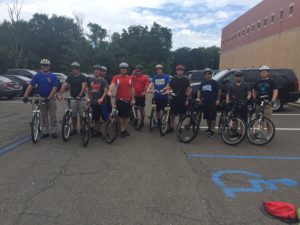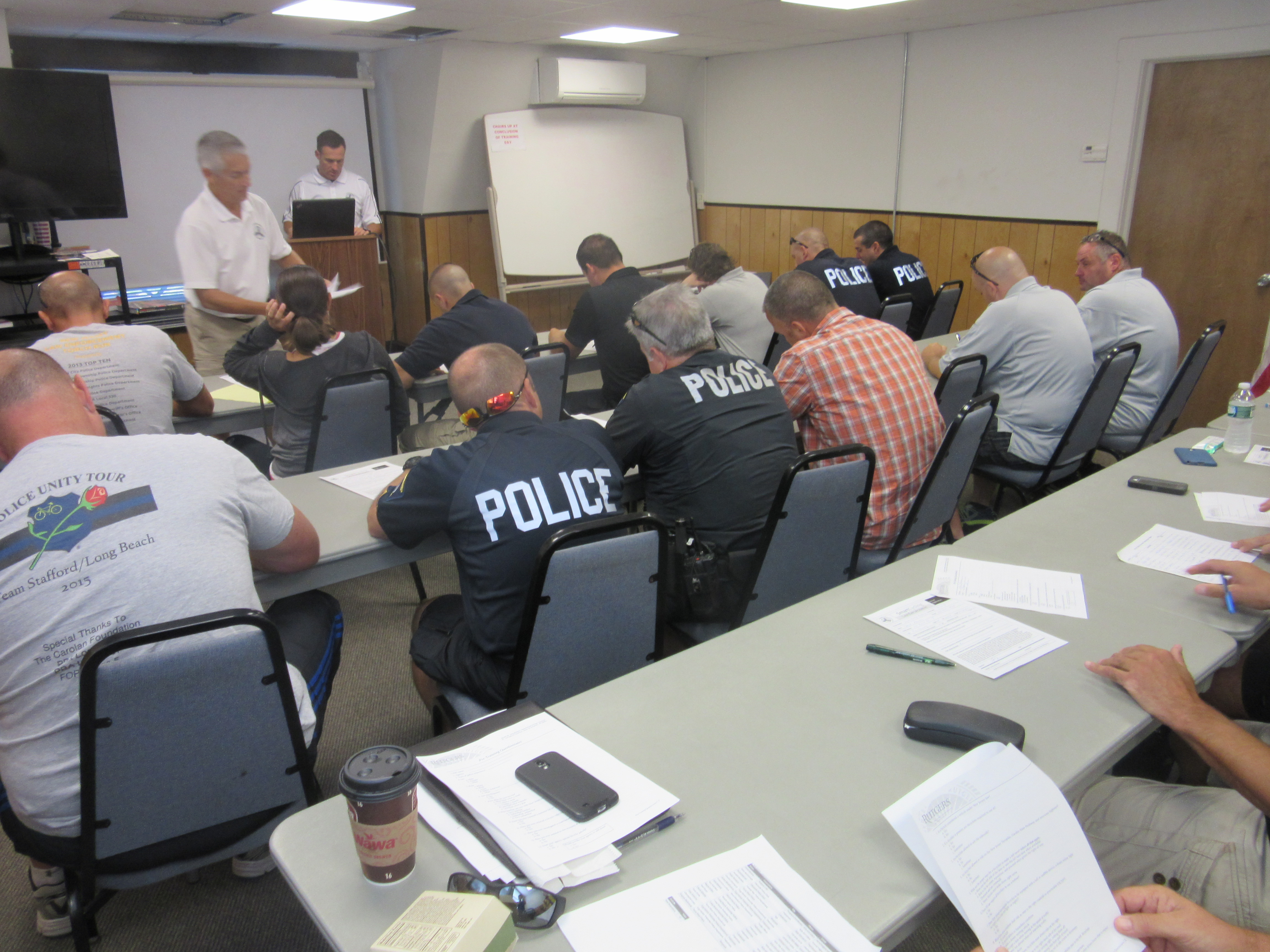A year later, and three more sessions in the books. If you’ve seen my posts over the last year, you know I’ve taught classes to police officers on how traffic laws apply to people on bicycles. The fundamental principle is the same as what the League of American Bicyclists teaches the public: “Cyclists fare best when they act and are treated as drivers of vehicles.”
It’s appropriate to point out here that bicyclists have the same rights and share the same responsilibities as motorists. IN ALL 50 STATES. The wording of the statute differs from state to state, but fundamentally, they all say that people on bicycles should drive their bicycles. Yes, you read that right. There are some statutes that only apply to motorists, and some that only apply to bicyclists, and some that bicyclists cannot follow by definition.
And that’s what the course is about.
Over the past few weeks, the NJBWC educated nearly 40 law enforcement officers from 18 police departments in three New Jersey counties in the rules of the road for bike riders. Like last year’s course, “Title 39: A Bike’s-Eye View,” it comprised classroom learning, skills building maneuvers on bikes, and a group ride on local roads. The purpose is to help the officers understand how traffic law relates to bike riders, and to give them first-hand experience of what most of us who ride regularly already know: the road is very different when you are on a bike. The course, funded by the NJ Division of Highway Traffic Safety, was held in locations in Atlantic, Monmouth, and Morris Counties in May.
It was modified a bit this year to spend a bit more time on one of the trickiest part of riding on the road…the “far right as practicable” rule. Like many other adults, many police officers, not being riders themselves, do not appreciate how traffic looks to a bicyclist. They also don’t fully understand the challenges bicyclists face in dealing with motorists. With this course, these officers are now equipped to be more effective in working with bicyclists as drivers. The course was designed to help officers also work with motorists, who often do not understand that bicyclists have a right to use the road in the same way that they do.
The course, developed specifically for law enforcement officers, addressed the so-called ‘Three E’s of Traffic Safety’: Education, Engineering, and Enforcement, in a classroom session. Encouragement and Equity were also discussed – some of the new “E’s” that have come onto the scene.
A significant portion of the enforcement section focused on Title 39:4-14.2. This statute says that bicyclists must ride as far to the right of the roadway as practicable (AFRAP), and enumerates several exceptions to that requirement. First: What does practicable mean? It means safe and reasonable. It does NOT mean “possible.” Bicyclists do NOT have to ride as far right as possible. Several scenarios challenged the officers to determine where the bicyclist would be if as far right as practicable. Two scenarios showed that it was actually on the left edge of the lane! We talked a lot about AFRAP as situational. It changes based on both location and time.
After classroom discussion, many of the officers got on bikes and practiced various drills to learn maneuvers that help avoid crashes.  Finally, they participated in a group ride that took them on a variety of roads ranging from low-speed, residential streets to major highways, to help them understand what it’s like to be a bike rider on those roads. On the ride, several “side-of-the-road” talks were used to point out the potential problem areas, designs, and hazards. We also used these talks to discuss AFRAP in various locations. At one spot, we pulled over near a parked car to show first, how dangerous it can be to ride close to parked cars, and also how far left a rider needs to be to avoid getting doored. Many were shocked to see that required the rider to be at the left side of the lane.
Finally, they participated in a group ride that took them on a variety of roads ranging from low-speed, residential streets to major highways, to help them understand what it’s like to be a bike rider on those roads. On the ride, several “side-of-the-road” talks were used to point out the potential problem areas, designs, and hazards. We also used these talks to discuss AFRAP in various locations. At one spot, we pulled over near a parked car to show first, how dangerous it can be to ride close to parked cars, and also how far left a rider needs to be to avoid getting doored. Many were shocked to see that required the rider to be at the left side of the lane.
“The real power of this course is its dual approach: classroom discussion helps officers become more aware of the motor vehicle code as it applies to bicyclists. Then, getting the officers on bikes gives them a real taste of how the world looks from the saddle,” said Sgt. John Barbour (Princeton University Public Safety), a co-instructor of the course.
The course was created in consultation with police officers. Classes were led by Mr. Leathem, who is a national coach for the League of American Bicyclists, and by police officers who are also bicyclists. for information about other such courses I’ve done, click here(2017) or here (2015).
